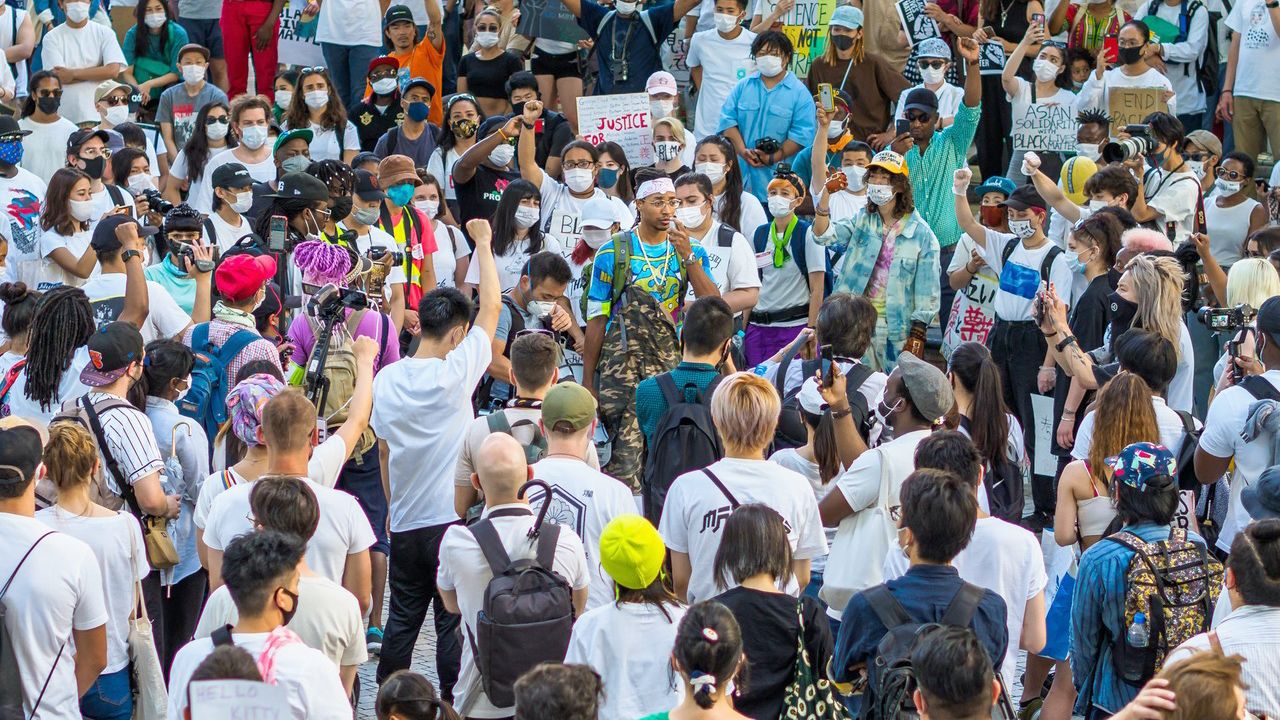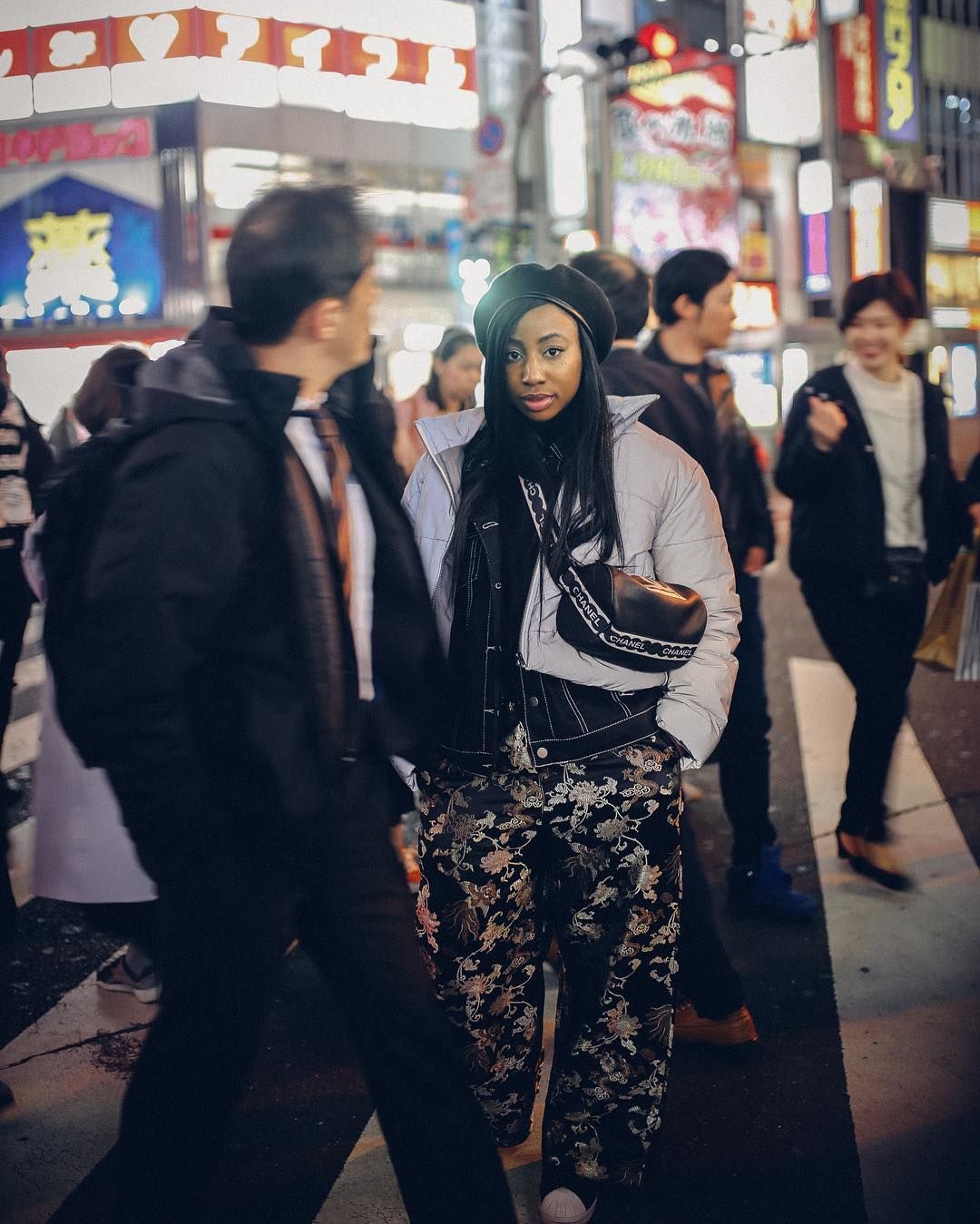
Black in Japan: Shifting the Narrative
Society- English
- 日本語
- 简体字
- 繁體字
- Français
- Español
- العربية
- Русский
Black in the World
Crowds of protesters are gathering in major global cities to show solidarity with the Black Lives Matter movement in the wake of the murder of George Floyd in police custody. Across the world people are defying governmental calls to stay at home to avoid further waves of COVID-19, and are instead mobilizing online and offline to fight what is seen as a more pressing and deadlier virus—racism. Surprisingly, the protests have even made their way to Japan, with demonstrations being held in big cities such as Tokyo, Osaka, and Kyoto. More than ever, people of all backgrounds want to know how to show their support and understand what it’s like to exist as a black person in the world.
While playing a significant role in raising awareness of the struggles of being black, media articles and viral videos detailing accounts of police brutality and everyday racism also feed into a dominant narrative that says the black experience is solely one of oppression. This narrative is global, not only applying to countries with large African diaspora populations. The ubiquity of such dispiriting accounts, and conversely, a lack of positive images of being black and abroad, have long served as a deterrent for black people seeking to travel overseas, especially to what are considered as unfamiliar or distant lands. Our imagination of the black experience, then, has largely been limited and confined.
Finding New Narratives in Japan
“I wanted to explore and shed light on what it’s like to be black in Japan, change the global narrative of blackness and disabuse any negative misconceptions. Our stories are often marginalized or don’t get told,” said Laranzo (Ranzo) Dacres, a Jamaican expat in Tokyo who launched the Black Experience Japan YouTube channel in 2017. He continues, “the work is close to my heart as I want to inspire the next generation of black youth around the world through showcasing a variety of role models.” The videos take the structure of informal interviews; BEJ has featured over 200 people who identify as black across Japan and other parts of Asia. Despite stepping into an already saturated J-vlogging scene, the explosive popularity of the channel suggests that Ranzo identified an important gap in the market. The channel has gained 200,000 subscribers, and the most popular interview has received more than 2.5 million views. “BEJ’s audience is remarkably diverse. Black people make up just a portion of the channel’s following and the stories we share are reaching people from all backgrounds,” he told us.
While J-vlogs typically follow a pattern of first-person explorations into Japanese culture, society, or language, for BEJ, Japan is simply a medium through which to learn more about what it’s like to be black and how living in certain countries can inform that experience. The channel has since branched out into covering black lives across East and Southeast Asia. Ranzo emphasizes that at the core, each story is not just a “black” story, it is a human story. He opined that distance promotes misunderstandings. “But if we’re able to bridge that gap by having authentic and open conversations, while spending time with those who differ from us, oftentimes we’ll find that we have more in common,” he said. “I think that’s a part of the influence BEJ has on our nonblack audience. It creates a bridge for them to venture over onto the other side. For our primary focus, our black audience, our channel engenders inspiration.”
A consistent theme that runs through almost all of Ranzo’s conversations with black expats in Japan is the “palpable sense of safety.” Interviewees regularly cite fears of police brutality, antiblack racism, and trouble in impoverished neighborhoods in their own countries, and contrast that with a feeling of freedom in Japan. Similarly, there is an impression that in Japan there are opportunities to build a life and freely explore one’s identity simply based on interests, talent, and hard work. They don’t have to constantly fight institutional barriers that impede black progress. Nor are they bound by a “white gaze” that functions as an invisible surveillance system to police and limit black expression. Black women are not silenced based on stereotypes of an “angry black woman” but are inspired to find their voice by creating platforms and communities to tell their stories. Japan serves as an unlikely source of empowerment as it can provide a safe space to breathe. Indeed, this sentiment is being repeated on a much wider level, as demonstrated by media aimed at black millennials where stories of African Americans relocating to escape racism are rapidly gaining in popularity.
Undoubtedly, black people in Japan do stand out. It’s now common to have white faces in the media, on advertisements, as school teachers and as tourists; so especially in the big cities, caucasians can feel like “familiar foreigners” to the locals. Black and brown people are still a rarity and can draw both intrigue and confusion. Yet, at the same time, black folk are generally considered as just another sort of foreigner. They are bundled together into the larger meta-category of gaikokujin, which is mostly applied to non-Japanese who are visibly different. This can ironically be levelling. Where Japanese riders may be hesitant to sit next to a black foreigner on the train, they will act the same toward a white foreigner and give up that prized opportunity to sit down on a packed commuter line.
Foreigners in Japan, then, share this experience of being “othered” by Japanese locals. There are guesthouses for foreigners, university dorms for international students, and at the workplace non-Japanese colleagues often develop friendships based on a common language or outsider status. This can create a dynamic where foreigners in Japan inhabit similar spaces and can gain a form of minority solidarity. Whereas networks back home would perhaps be less diverse and unconsciously form along racial or cultural divides, Japan creates an environment where people from completely different backgrounds bond, find commonalities and look beyond the color line. For many black people, especially those from Western societies, being equally treated (by Japanese people) as “just another foreigner,” and “an alien like me” (by other foreigners), can more profoundly be the first time that they experience being just another person.
Japan and Blackness
Although a largely forgotten story, Japan has historically been a source of black inspiration and empowerment. Meiji Japan’s rapid modernization at the end of the nineteenth century and victory as a nonwhite nation in the 1904–5 Russo-Japanese war convinced prominent black intellectuals like W. E. B. Du Bois that the myth of white superiority was destroyed. African Americans imagined a transnational solidarity with the Japanese as another “dark race.” To Marcus Garvey, a leader of Pan-Africanism in the early twentieth century, Japan was a nation that had removed the suffocating knee of white supremacy from its neck, and could serve as a model for the black race to follow.
Japan’s more recent history has meant that its special place as a champion of people of color has vanished. Despite unreconciled issues in relation to its own colonial past and a blind eye turned to minorities within its borders, for the majority of Japanese people, racism and discrimination are uniquely foreign problems that have little relevance to a harmonious and homogenous Japanese society with low immigration.
Japan is no postracial utopia. Stereotyping is common and popular media representations of blackness are mostly limited to characters who act buffoonish or who are valued for their hyperphysicality. More recently, Japanese television has come under fire for thoughtless incidents of blackface and offensive caricatures of Black Lives Matter protesters. To be sure, the stereotyping of black folk as aggressive, hypersexualized, or unintellectual entertainers is not unique to Japan, and is better interpreted as a reflection of the tropes of blackness that originated and are perpetuated in the West. While it is also not strange to see white faces as clownlike entertainers on Japanese tv, there is a much broader and positive representation that regularly elevates whites as experts, educators, and the aesthetic ideal.
Japan’s aspiration towards ever whiter skin goes beyond an importation of Western beauty standards and has deeper cultural roots that ties whiteness to higher socioeconomic status. Despite being hypervisible in Japan, black women especially can also ironically be made to feel invisible and overlooked for not fitting within the Japanese imagination of a Disney princess. Even apparent expressions of appreciation can sometimes feel invasive. The famous Japanese politeness is rendered absent when locals reach out to touch a black woman’s hair or other body parts, or when they fetishize black women through openly commenting on an “erotic” or “sexy” body shape.
Racial stereotyping and colorism within Japan perhaps have their most profound social and psychological effect on the lives of mixed black-Japanese, or hāfu, raised in Japan. Not only are they forced to deal with the identity issues of not being accepted as fully Japanese but their visibility due to a darker skin tone also accentuates their apparent foreignness, meaning that they have to simultaneously battle for recognition and fight against harmful stereotypes. With a lack of diverse representation, it is no surprise then to see that the most celebrated hāfu are within the fields of sports and entertainment.
A Diversity of Blackness
The notion of a hierarchy of national cultures is deeply rooted in Japan. Nineteenth-century Japanese thinkers such as Fukuzawa Yukichi posited a theory of civilization that imagined a dynamic hierarchy with the West at its apex. He concluded that it was incumbent on Japan to rise up the totem pole and leave the more uncivilized nations behind. Assumptions of Western superiority permeate Japanese society to this day. Indeed, black expats in Japan (especially native English speakers) from Western countries can gain cultural capital by being associated with the “advanced” West—a “white privilege” of sorts. In other words, hailing from North America, Europe, or Australia can be a more important determining factor in perception and treatment than blackness. While this doesn’t mean that black Westerners all benefit, it does offer them a rare opportunity to be judged based on the content of their character rather than the color of their skin. Yet, this is not freely granted to all, as black expats from what are considered “developing countries” can encounter more bureaucratic hurdles and unconscious biases premised on a culturally superior Japan.
Indeed, one of the key messages from Black in Tokyo, a 2017 documentary short with over a million YouTube views produced by the Nigerian-American creative Amarachi Nwosu, is the sheer diversity of the black experience. It’s critical to remember that “black people are not one dimensional,” said Amarachi during her 2019 Black History Month photography exhibition and film screening in Tokyo. As a founder of her own branding agency, Melanin Unscripted, Amarachi is conscious of the importance of taking ownership. She believes that the diversity of the black experience only shines through when black people are empowered to tell their own stories. “Often in Japan,” she explains, “I didn’t see a reflection of my identity, my culture, and my experience. It forced me to take a risk and create that narrative myself, rather than waiting indefinitely to be represented by someone that doesn’t look like me.”
Ranzo adds that black people have a complex and paradoxical challenge, “because we are all unique, and blackness is not monolithic; but at the same time, many feel the weight of responsibility to improve the image of the collective by dispelling the harmful misconceptions that exist.” While it can be tempting to generalize the black experience, being black in Japan highlights that there are in fact infinite ways to be black, and these stories are just beginning to be told.
(Originally written in English. Banner photo: Black Lives Matter march in Osaka. © Rodney Smith.)
